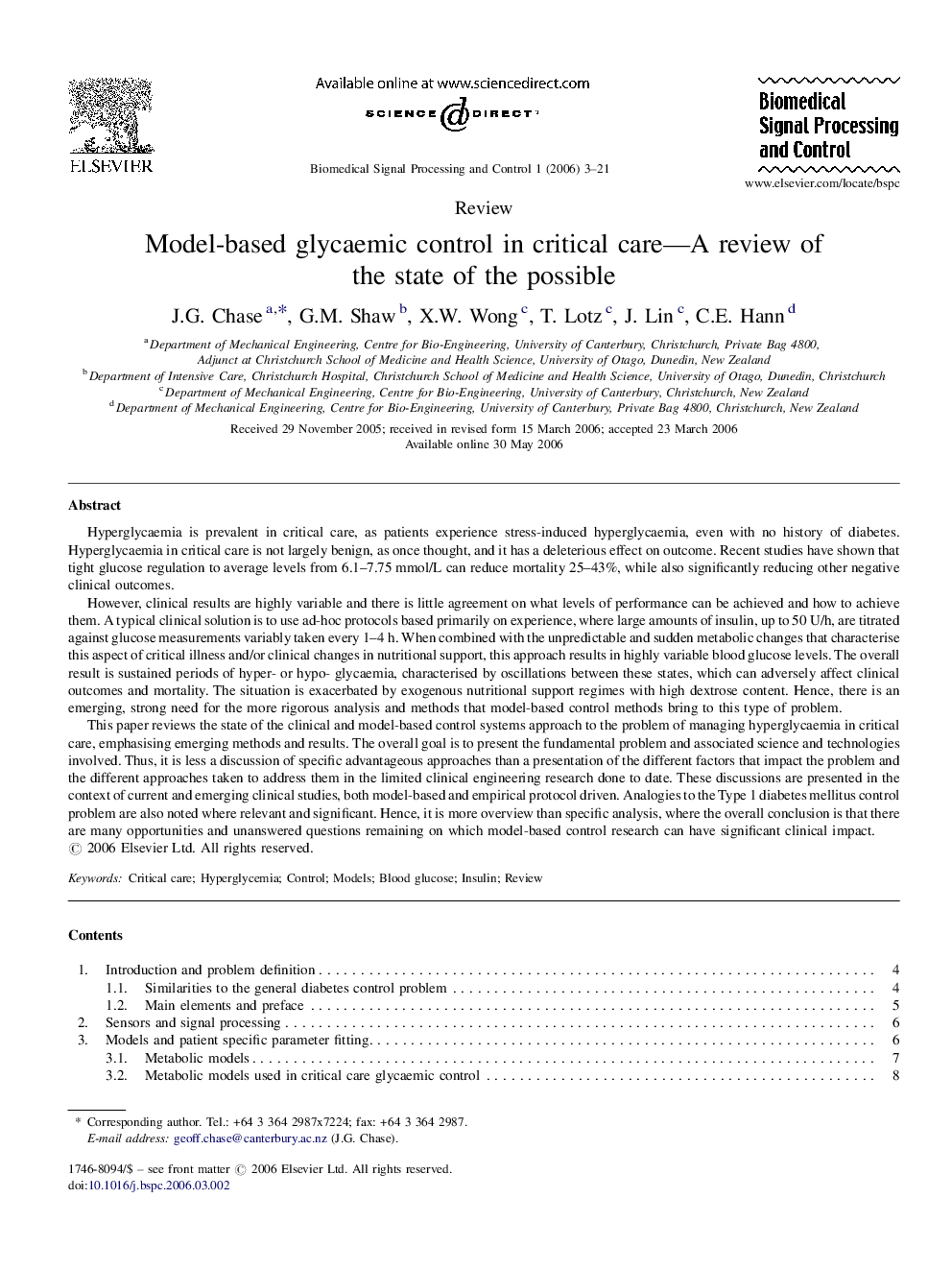| Article ID | Journal | Published Year | Pages | File Type |
|---|---|---|---|---|
| 558163 | Biomedical Signal Processing and Control | 2006 | 19 Pages |
Hyperglycaemia is prevalent in critical care, as patients experience stress-induced hyperglycaemia, even with no history of diabetes. Hyperglycaemia in critical care is not largely benign, as once thought, and it has a deleterious effect on outcome. Recent studies have shown that tight glucose regulation to average levels from 6.1–7.75 mmol/L can reduce mortality 25–43%, while also significantly reducing other negative clinical outcomes.However, clinical results are highly variable and there is little agreement on what levels of performance can be achieved and how to achieve them. A typical clinical solution is to use ad-hoc protocols based primarily on experience, where large amounts of insulin, up to 50 U/h, are titrated against glucose measurements variably taken every 1–4 h. When combined with the unpredictable and sudden metabolic changes that characterise this aspect of critical illness and/or clinical changes in nutritional support, this approach results in highly variable blood glucose levels. The overall result is sustained periods of hyper- or hypo- glycaemia, characterised by oscillations between these states, which can adversely affect clinical outcomes and mortality. The situation is exacerbated by exogenous nutritional support regimes with high dextrose content. Hence, there is an emerging, strong need for the more rigorous analysis and methods that model-based control methods bring to this type of problem.This paper reviews the state of the clinical and model-based control systems approach to the problem of managing hyperglycaemia in critical care, emphasising emerging methods and results. The overall goal is to present the fundamental problem and associated science and technologies involved. Thus, it is less a discussion of specific advantageous approaches than a presentation of the different factors that impact the problem and the different approaches taken to address them in the limited clinical engineering research done to date. These discussions are presented in the context of current and emerging clinical studies, both model-based and empirical protocol driven. Analogies to the Type 1 diabetes mellitus control problem are also noted where relevant and significant. Hence, it is more overview than specific analysis, where the overall conclusion is that there are many opportunities and unanswered questions remaining on which model-based control research can have significant clinical impact.
